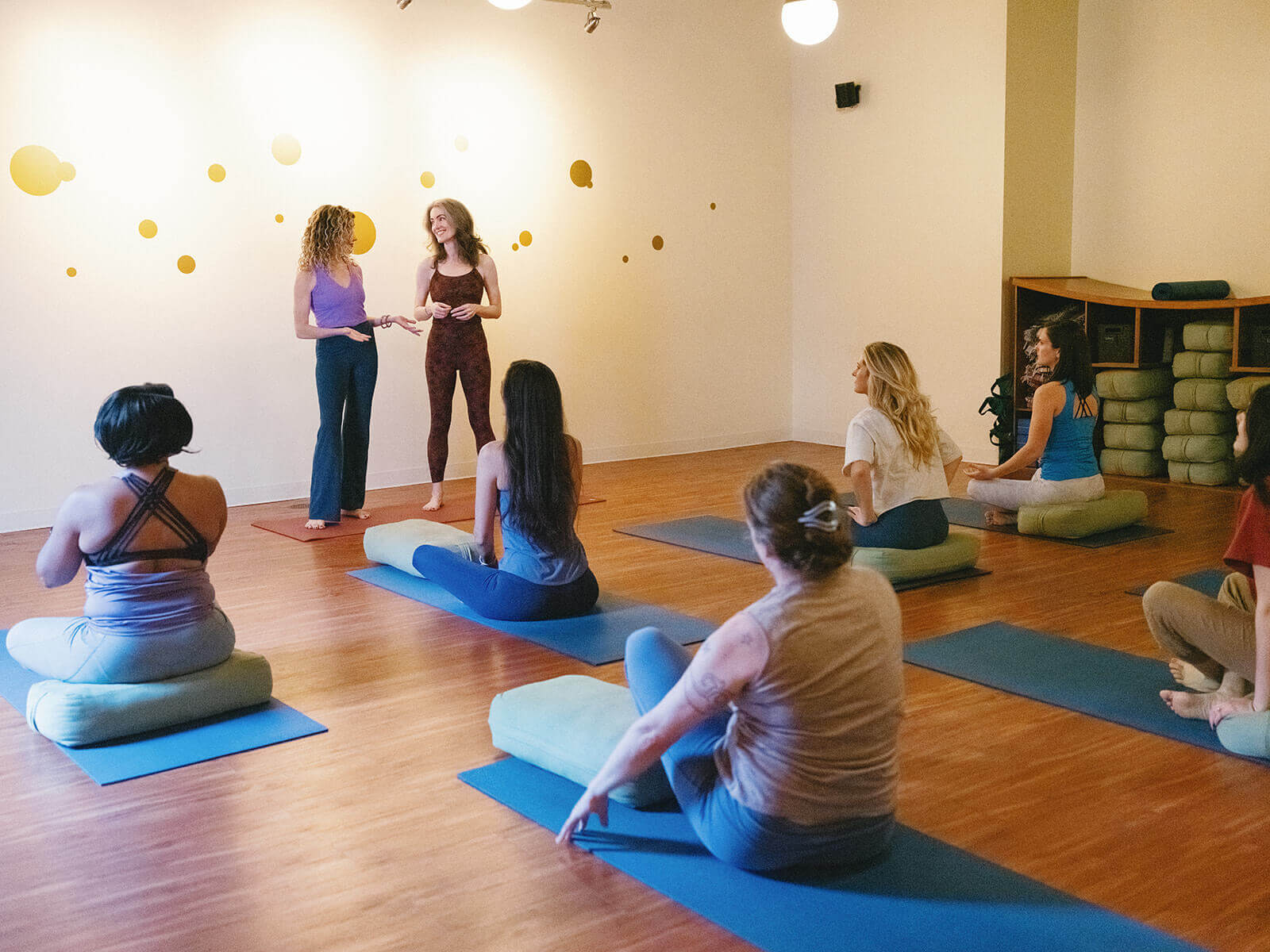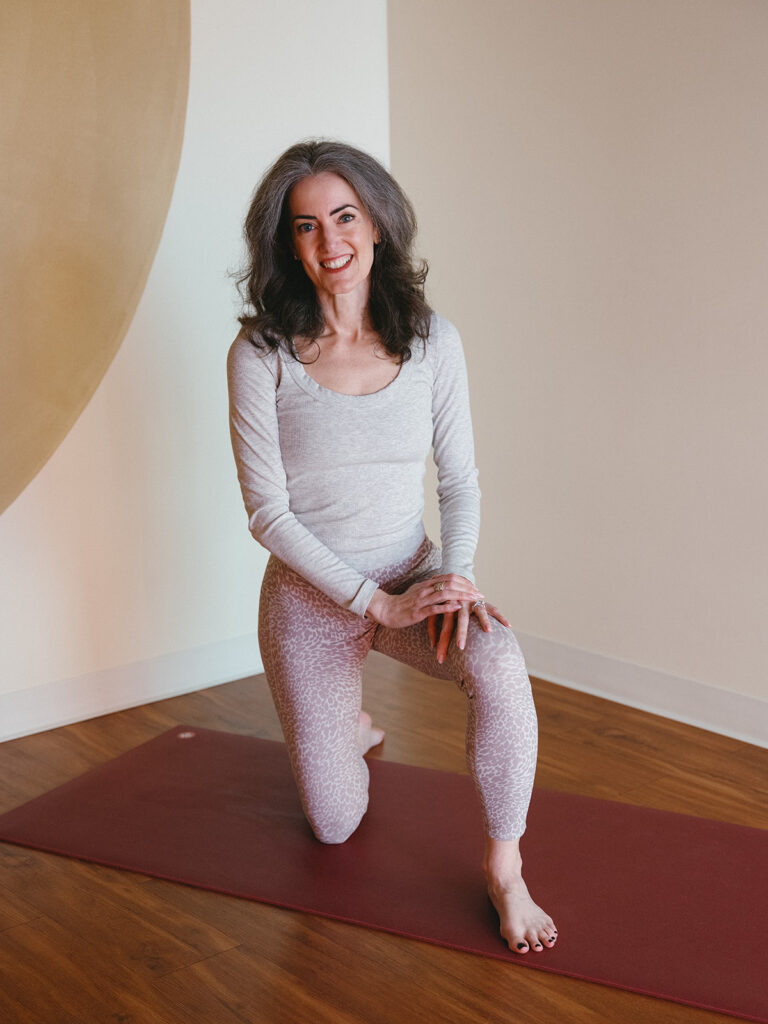If you’ve recently completed a 200-hour yoga teacher training and still feel like you don’t know how to teach, or like the one thing you know is how little you know, you’re not alone. That feeling of “Wait, what now?” is more common than you think. I call it Phase 1 of the Yoga Teacher Success Timeline: Post-Training Overwhelm.
It’s the season when you’re planning classes for hours, second-guessing every pose and transition, and thinking, “How did everyone else figure this out so fast?”
Let me assure you: they didn’t. They’ve just taught the same sequences dozens of times.
You’re not broken. You’re just trying to do too much, too soon, without a framework that helps you feel grounded.
So let’s walk through why this overwhelm happens—and what to do about it.
And if you’d like to listen on the go, this is the subject of episode 45 of Yoga Teacher Confidential.
The Common Symptoms of Phase One
Here’s what it looks like when you’re in post-YTT overwhelm:
- You’re spending 3+ hours planning each class—it takes more time to plan than to get to class, teach, and come home
- You alternate between rigid memorization and complete improvisation
- You’re worried about every possible student need in class
- You’re Googling modifications on the way to class
- You feel like your 200-hour didn’t actually prepare you to teach
- You don’t feel confident in your voice or teaching identity
This isn’t a failure. It’s your brain trying to perform a complex task—teaching—while still processing a ton of theoretical knowledge. It’s like learning to drive while also studying for your driving test.
The Mistake That Keeps You Stuck
Many teachers make the same well-intentioned mistake: creating a brand-new sequence for every class.
It sounds noble. Creative. Devoted, even.
But it’s exhausting. And it actually holds your students back.
When your sequence is always changing, your students are always adapting. They don’t get to build mastery or confidence—and neither do you. You’re spending hours reinventing the wheel, and no one is benefiting from that effort in the way you think.
What Worked for Me (and My Students)
After years of doing exactly that, I shifted. I started teaching the same base sequence for a month at a time. I’d vary the emphasis, the pace, the transitions—but the structure stayed steady.
Here’s what happened:
- My students improved faster
- They felt more confident and safer in class
- I got better at cueing, adapting, and observing
- My planning time dropped dramatically
I call this the capsule wardrobe approach to sequencing: a small set of go-to combinations that you mix and match with confidence.
How the 6-4-2 Framework Can Help
When you’re unsure what to include in your sequences, the 6-4-2 framework offers instant clarity.
- 6: The six movements of the spine (forward fold, backbend, side bends, twists)
- 4: The four lines of the legs (front, back, inner, outer)
- 2: The two core actions (stabilization and articulation)
If you include all of those in every class, if not every sequence, you’re already creating a well-balanced experience. It’s that simple.
Instead of trying to remember dozens of poses or transitions, use this as your recipe. You can vary it endlessly—but the base is reliable, efficient, and effective.
Repetition Isn’t Lazy—It’s Loving
One of the biggest mindset shifts in Phase One is learning that repetition is not the enemy.
In fact, repeating a sequence helps your students (and you!) feel more confident. They know what to expect. They can refine rather than just survive. And you can focus more on language, presence, and connection—rather than frantically remembering what comes next.
Start Here: Five Steps to Move through Phase One
- Clarify your core values. Ask yourself: Why do I want to teach? What do I want my students to experience? This anchors every class you teach.
- Build a base recipe. Use the 6-4-2 framework to plan a simple warmup or short sequence. Teach this for several weeks with slight variations.
- Practice it in your own body. Feel how the transitions land. Adjust as needed before taking it to your students.
- Teach it at least three times. Don’t switch it up after one try. Familiarity builds confidence.
- Focus on student-centered language. You don’t need perfect cues—just clear, inclusive ones that help your students feel safe and supported.
Want More Support? Start Here for Free
I created a free mini-course just for teachers in Phase 1. It’s called “Finding Your Voice as a Yoga Teacher,” and it’s available now inside Comfort Zone Yoga.
It walks you through clarifying your teaching values and building confidence in your unique voice—without needing to know everything or have it all figured out.
This phase of overwhelm won’t last forever. But it will shape your foundation.
When you stop trying to do it all, and start building from what you actually know—you teach from presence, not panic.


